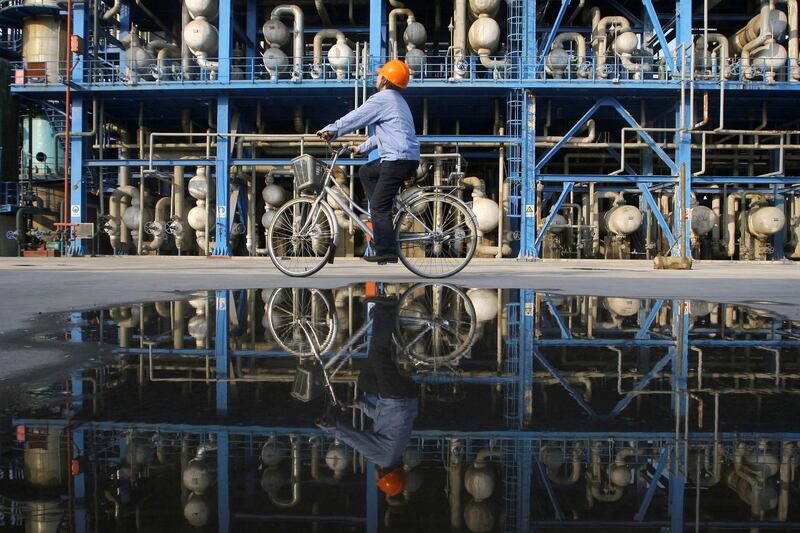Why is the benchmark value of Oman crude oil sometimes spectacularly different when assessed by S&P Global Platts, compared to the value established for the very same crude oil through trading on the Dubai Mercantile Exchange?
It is an important question because the answer shines a bright spotlight on how different the DNA can be for different price benchmarks representing the same market, which ultimately can have huge value implications.
In the last week of September, physical Oman crude for loading in November surged to settle as much as $7.61 per barrel higher on the DME, when compared to the value of physical Oman delivered for the same month, as assessed by Platts. To put it another way, Oman was at times 10% more expensive when valued by the DME reference price than by the Platts Oman benchmark – raising the value of a VLCC loaded with Oman by $15 million. Significant price differences between DME Oman and Platts Oman continue this month.
But why? In itself, the crude is the same, the loading dates are the same, the time of trading is more or less the same, and the market participants active in trading Oman oil are broadly the same. At first glance, arbitrage alone should theoretically prevent Platts Oman and DME Oman from decoupling too much.
Understanding how Platts and DME Oman are different reveals how vital it is to understand the DNA of any benchmark, especially if you plan to use one to better understand the value of a multibillion-dollar oil market.
Oman Blend is a medium sour grade of crude oil that has served the world markets well for many decades. It is openly traded on the spot market without destination restrictions. It is popular with buyers as diverse as China's ultramodern refineries to the ageing California refinery fleet, burdened as it is by high costs and challenging economics.
With no shortage of buyers, stable production, a diverse trade community and a sterling reputation for quality and reliability, it is easy to see why the value of Oman crude has become a key benchmark and a good reference for understanding global crude prices.
Trading activity alone is just one input into the value of a benchmark. The final benchmark price from any provider is shaped by three core forces: the definition of the benchmark, the way market data is collected, and the analytical approach applied to that data to come up with a single, final value. Taken together, these three forces are what we call methodology at Platts.
Platts Oman and DME Oman represent the same crude oil, but they differ in each methodological respect. The value of Oman on the DME reflects the value of Oman on its own. The value of Oman as assessed by Platts reflects the value of Oman, but also includes the potential delivery of Murban crude oil from Abu Dhabi, at the seller's option, if economics support delivering an alternative crude oil.
Platts collects data from across the spot markets using our Market on Close assessment process, which is underpinned by transparent bids, offers and trades with named counterparties. The DME reflects trade on the exchange with its own, publicly described price settlement process.
_______________
Read more:
Timeline: Adnoc's transformation under CEO Sultan Al Jaber
Baker Hughes to pay $550 million for minority stake in Adnoc's drilling unit
Middle East needs to focus on making new hydrocarbon discoveries
_______________
The challenge is to understand the differences in methodology, and then to consider which methodology best suits the market's needs.
Platts introduced Murban as an alternative delivery crude oil for our Oman benchmark in January 2016 along with a Quality Premium that reflects Murban's relatively premium market value. That followed deep industry consultation through 2015, when many market participants highlighted the value of having a pressure release valve for Oman.
Just a few months ago Total delivered a cargo of Murban to Shell instead of an Oman shipment in the Platts MOC - the very first time this particular alternative delivery was used, demonstrating the importance and value of the idea.
As a general guideline, the more popular a crude oil is among buyers, and the more relevant the price is for the global economy, the more essential new ideas and innovations like alternative delivery are - and they usually need to be introduced long before they are actually needed.
We have pioneered alternative delivery mechanisms for Platts Brent, Platts Dubai and indeed Platts Oman. In our view, a strong crude benchmark needs at least a million barrels per day of deliverable oil from the spot market to support it, including the core grade and its alternatives.
When you break down the economics of Oman crude - including the fact that 200,000 barrels per day or more of production is already committed to local refining - the case for alternative delivery is strong indeed, especially when you consider other factors like field maintenance. Logistical headaches like standard field work can be major migraines for benchmarks that aren’t well prepared.
In reality, evidence that Platts Oman and DME Oman are actually very different benchmarks has been in front of all of us for years. Platts Oman and DME Oman have decoupled more than 20 times since we introduced the Murban alternative delivery mechanism in 2016. And over the lifetime of the two benchmarks, Platts Oman and DME Oman have often been very different indeed. At the end of the day, it is up to market participants to decide which benchmark price best meets their needs.
Dave Ernsberger is head of energy pricing, S&P Global Platts






